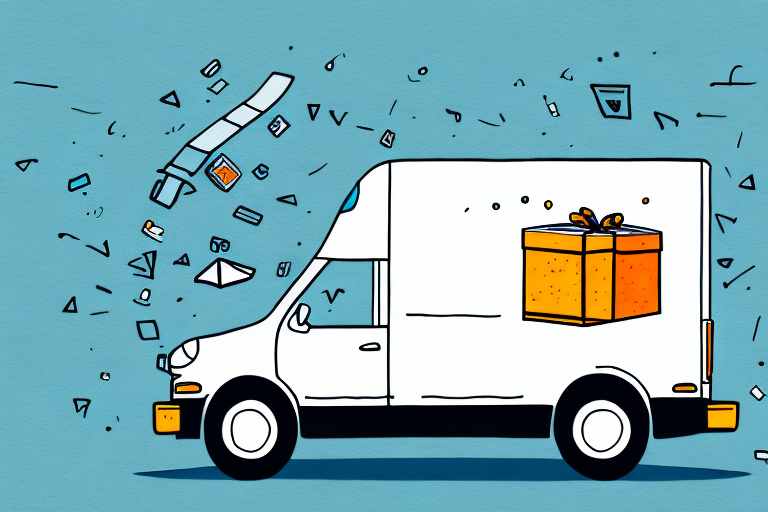Understanding the Courier Services Market
Starting a courier services business offers the opportunity to capitalize on the growing demand for fast and reliable delivery solutions. With the exponential rise of e-commerce, the courier industry has seen significant growth, creating numerous opportunities for new entrants. According to IBISWorld, the courier and delivery services industry in the United States alone is projected to grow steadily over the next few years.
Market Growth and Demand
The surge in online shopping, especially accelerated by the COVID-19 pandemic, has led to an increased demand for courier services. Consumers now expect faster delivery times, with many retailers offering same-day or next-day delivery options. Additionally, businesses are seeking reliable partners to handle their logistics needs, further driving the demand for specialized courier services.
Competitive Landscape
The courier industry is highly competitive, with major players like FedEx, UPS, and DHL dominating the market. To stand out in this crowded field, new courier businesses must identify unique selling propositions (USPs) such as specialized delivery services, superior customer service, or innovative technology integration.
Conducting a Feasibility Study
A comprehensive feasibility study is essential to evaluate the viability of your courier services business. This involves analyzing market demand, understanding the competitive environment, and assessing your own capabilities.
Assessing Demand and Competition
Evaluate the current demand for courier services in your target area. Utilize market research reports from sources like Statista to gather relevant data. Additionally, assess the strengths and weaknesses of existing competitors to identify gaps in the market that your business can fill.
Legal Requirements
Understanding the legal framework is crucial. Ensure you obtain all necessary licenses and permits required to operate a courier business in your region. This may include a business license, commercial vehicle registration, and compliance with local transportation regulations.
Technology and Equipment Needs
Investing in the right technology and equipment can significantly enhance your operational efficiency. Consider implementing a robust Courier Management System for tracking deliveries, managing routes, and handling customer communications. Reliable vehicles, GPS tracking devices, and efficient packaging materials are also essential.
Choosing the Right Legal Structure and Registration
The legal structure of your business impacts taxation, liability, and administrative requirements. Common legal structures for courier services include:
- Sole Proprietorship: Simple to set up but offers no personal liability protection.
- Limited Liability Company (LLC): Provides liability protection while offering flexibility in management and taxation.
- Corporation: Suitable for larger businesses with more complex structures and investment needs.
Consulting with a legal professional can help you determine the best structure based on your business goals and risk tolerance. Once decided, register your business with the appropriate state authorities and obtain any necessary permits.
Developing a Competitive Pricing Strategy
Pricing your services competitively is vital for attracting and retaining customers while ensuring profitability. Consider the following factors when developing your pricing strategy:
- Operational Costs: Include expenses such as vehicle maintenance, fuel, salaries, and technology investments.
- Market Rates: Research the pricing models of competitors to ensure your rates are competitive.
- Value-Added Services: Offer premium services like same-day delivery or specialized handling to justify higher prices.
Implementing a tiered pricing structure can cater to different customer needs and budgets, enhancing your market appeal.
Marketing and Branding Strategies
Effective marketing is essential to establish your brand and attract customers. Key strategies include:
Digital Marketing
- Search Engine Optimization (SEO): Optimize your website for relevant keywords to improve visibility in search engine results.
- Social Media Marketing: Utilize platforms like Facebook, Instagram, and LinkedIn to engage with potential customers and promote your services.
- Content Marketing: Create informative blog posts, videos, and infographics that address customer pain points and showcase your expertise.
Traditional Marketing
- Local Advertising: Advertise in local newspapers, radio stations, and community bulletin boards.
- Networking: Participate in local business events and join industry associations to build connections and gain referrals.
Building a Strong Brand Identity
A compelling brand identity distinguishes your business from competitors. Focus on creating a memorable logo, consistent branding across all platforms, and delivering exceptional customer service to build trust and loyalty.
Operations: Staffing, Equipment, and Technology
Efficient operations are the backbone of a successful courier services business. Key components include:
Recruiting and Training Staff
Hire reliable and customer-oriented employees. Positions to consider include:
- Couriers: Responsible for the timely and safe delivery of packages.
- Dispatchers: Manage delivery schedules and routes.
- Customer Service Representatives: Handle customer inquiries and resolve issues.
Provide comprehensive training to ensure your team understands company policies, safety protocols, and customer service standards.
Investing in Equipment and Technology
Equip your business with the necessary tools to operate smoothly:
- Vehicles: Reliable and fuel-efficient vehicles are essential for timely deliveries.
- GPS Tracking: Enables real-time tracking of deliveries, enhancing transparency and efficiency.
- Logistics Software: Streamlines route planning, order management, and customer communications.
Financial Management and Risk Mitigation
Sound financial management ensures the sustainability and growth of your business.
Managing Cash Flow
Maintain a detailed financial plan that includes budgeting, forecasting, and monitoring cash flow. Tools like accounting software can help track expenses and revenue, ensuring you stay within budget and identify areas for cost savings.
Insurance and Risk Management
Protect your business with appropriate insurance policies, such as:
- General Liability Insurance: Covers legal claims against your business.
- Vehicle Insurance: Protects against damages or accidents involving your delivery vehicles.
- Workers' Compensation Insurance: Provides coverage for employee injuries on the job.
Implementing risk management strategies, such as regular vehicle maintenance and employee training, can further mitigate potential risks.
Growth and Expansion Strategies
As your courier services business becomes established, consider strategies to expand and diversify your offerings:
Expanding Service Areas
Increase your delivery radius to cover more regions, thereby reaching a larger customer base. Conduct market research to identify high-demand areas that are underserved by existing courier services.
Diversifying Services
Offer specialized services to cater to different customer needs, such as:
- Same-Day Delivery: For customers requiring urgent deliveries.
- White Glove Services: Handling fragile or high-value items with extra care.
- Refrigerated Transport: For perishable goods that require temperature-controlled environments.
Adopting Emerging Technologies
Stay ahead of industry trends by adopting new technologies. Innovations like drone deliveries and autonomous vehicles are set to revolutionize the courier industry, offering faster and more efficient delivery options.
Staying Ahead of Industry Trends
To maintain a competitive edge, keep abreast of the latest trends and advancements in the courier industry:
Automation and AI
Integrate automation and artificial intelligence into your operations to optimize routes, predict delivery times, and enhance customer service through chatbots and automated notifications.
Sustainability Initiatives
Adopt eco-friendly practices, such as using electric vehicles and sustainable packaging materials, to appeal to environmentally conscious consumers and reduce your carbon footprint.
Customer Experience Enhancements
Focus on improving the overall customer experience by offering real-time tracking, flexible delivery options, and personalized services. Prioritizing customer satisfaction can lead to repeat business and positive word-of-mouth referrals.
Tips for Maintaining a Successful Courier Business
Building and sustaining a successful courier services business requires ongoing effort and strategic planning. Consider the following tips:
- Focus on Customer Service: Prioritize prompt, reliable, and courteous service to build strong customer relationships.
- Invest in Continuous Training: Regularly train your staff to keep them updated on best practices and industry standards.
- Monitor Financial Health: Keep a close eye on your financial metrics to ensure profitability and identify growth opportunities.
- Stay Adaptable: Be prepared to adapt to changing market conditions, customer preferences, and technological advancements.
- Leverage Feedback: Collect and act on customer feedback to continuously improve your services.
By adhering to these principles and maintaining a commitment to excellence, your courier services business can thrive in a competitive market.




















